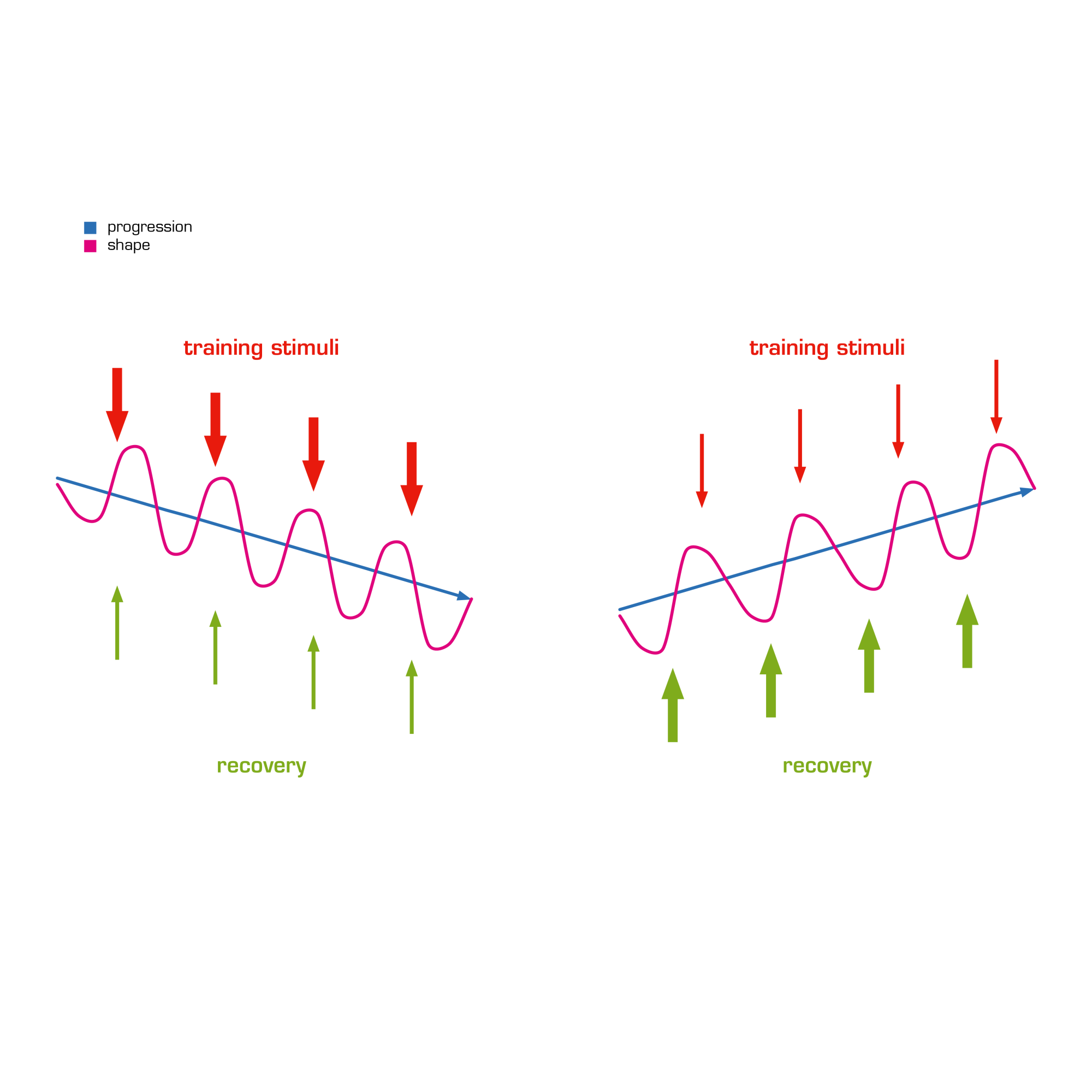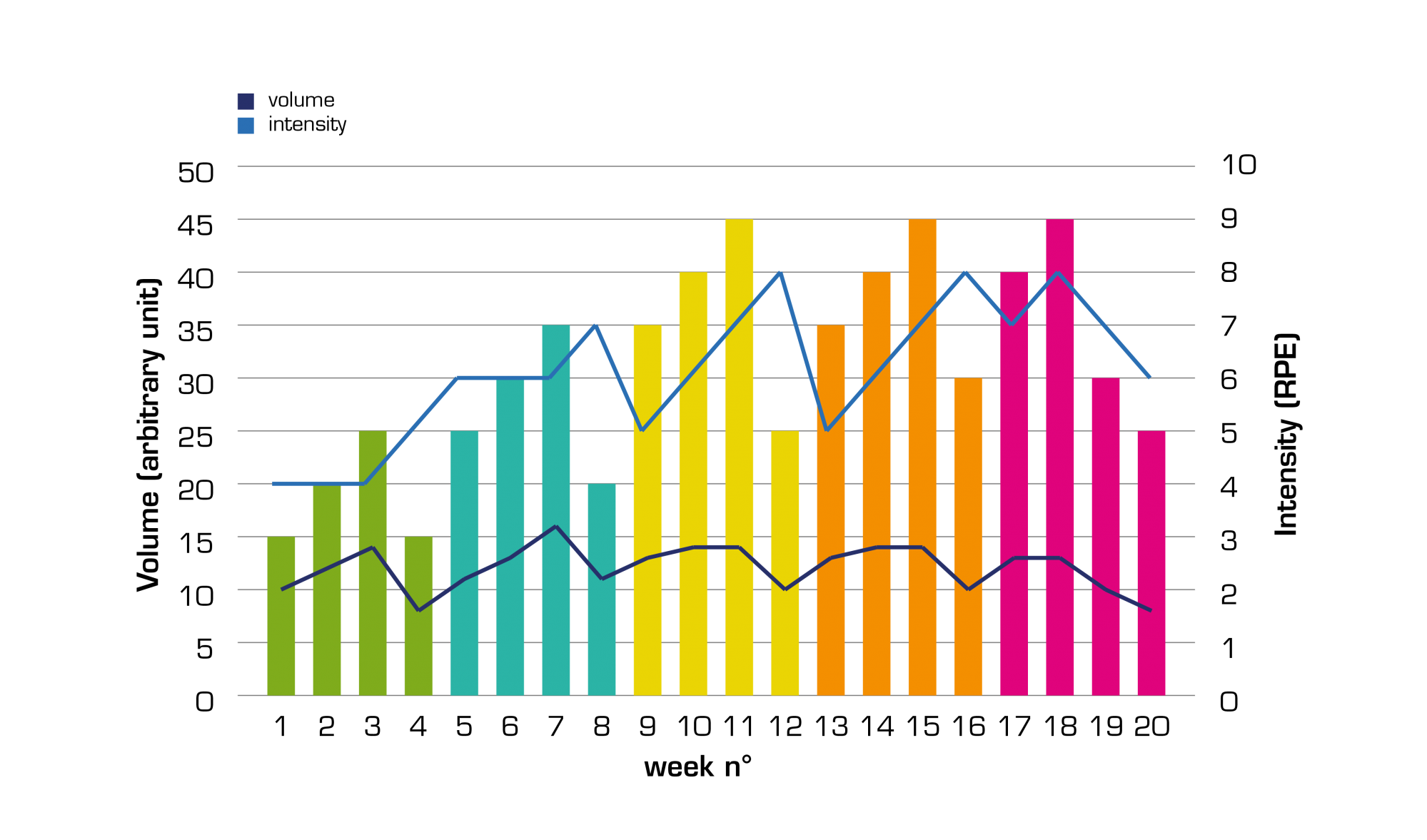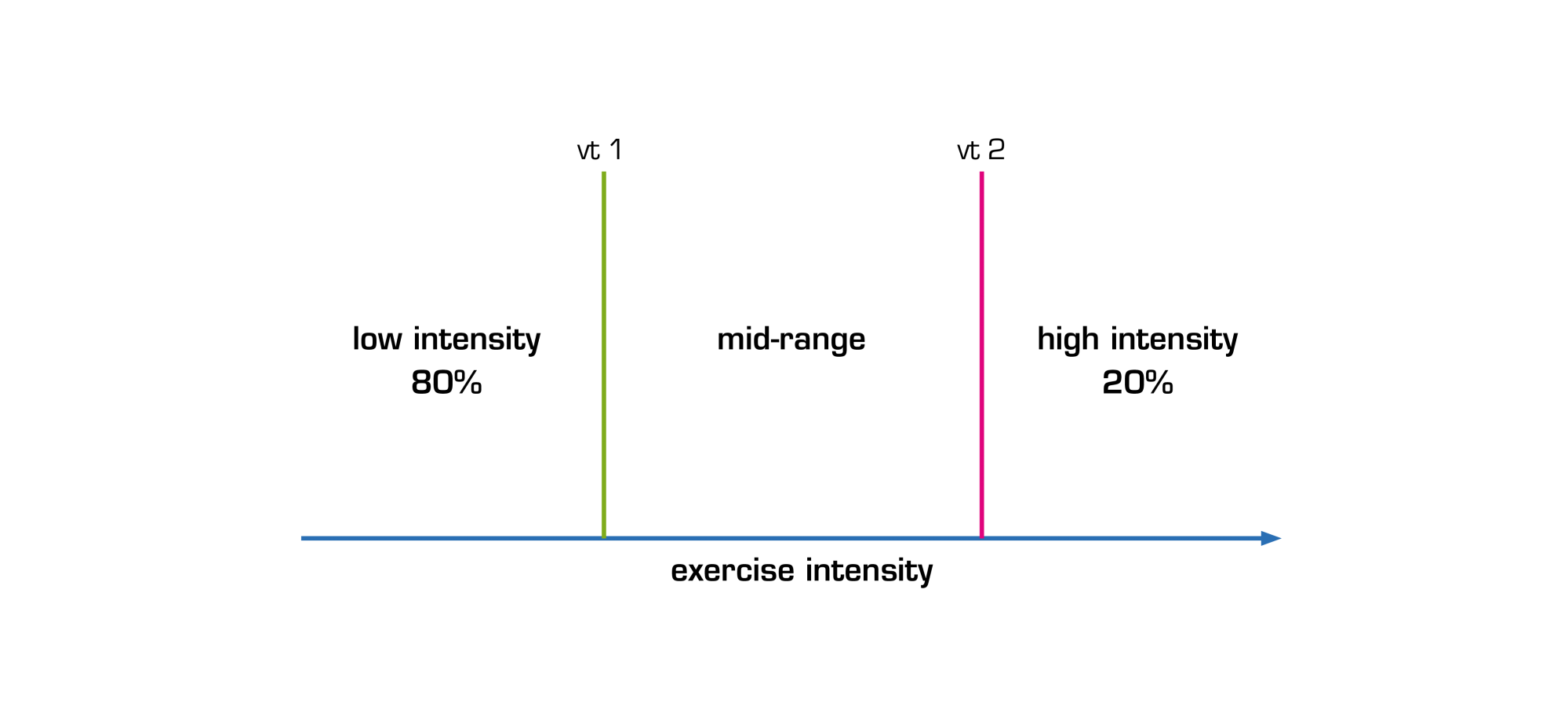Pomoca's journey to Patrouille des Glaciers
TRAINING PRINCIPLE
Training and the physiological stress induced in the organism facilitate the body's adaptation and consequent enhancement of performance. Nevertheless, it is crucial to acknowledge that recovery is imperative for the restoration of energy reserves depleted during each training session. Effective management of the equilibrium between stress and recovery is conducive to achieving a supercompensation effect. Exemple 1 below shows a positive training cycle where performance level will drop after a training stimulus and will only raise after a complete recovery, thus showing the supercompensation effect. On the contrary, exemple 2 depicts a negative training cycle, where recovery is incomplete. Despite training stimuli, the progression is negative.

To learn more about periodization or polarized training:
Issurin, V. (2008). Block periodization versus traditional training theory: a review. Journal of sports medicine and physical fitness, 48(1), 65.
Issurin, V. (2010). New horizons for the methodology and physiology of training periodization. Sports medicine, 40, 189-206.
Seiler, S., & Kjerland, G. Ø. (2006). Quantifying training intensity distribution in elite endurance athletes: is there evidence for an “optimal” distribution?. Scandinavian journal of medicine & science in sports, 16(1), 49-56.
Seiler, S., & Tønnessen, E. (2009). Intervals, thresholds, and long slow distance: the role of intensity and duration in endurance training. Sportscience, 13.


